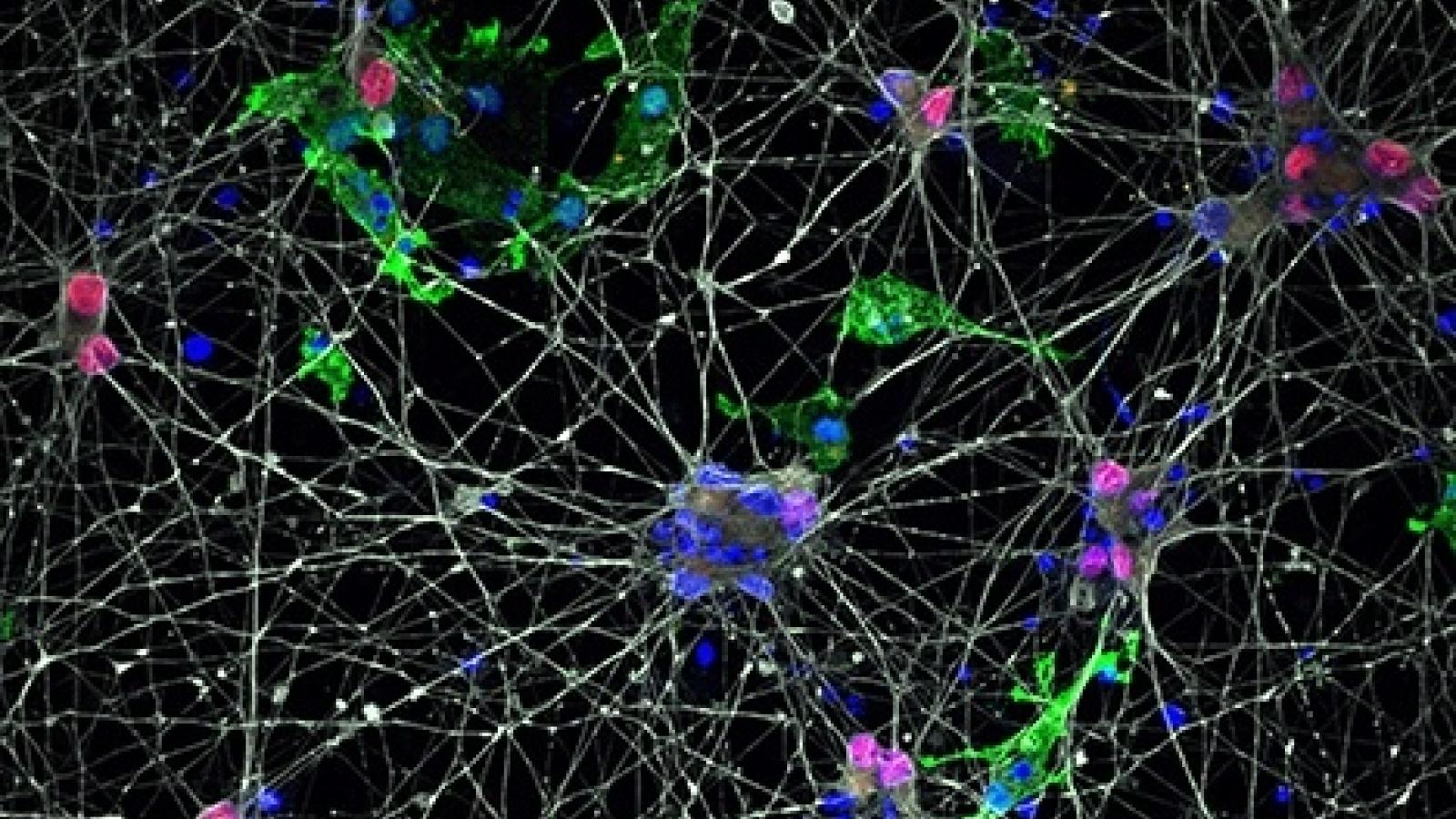A new study, led by Prof Siddharthan Chandran and Prof Josef Priller (UK DRI at Edinburgh), has revealed that the essential waste clearance role within microglia, the brain’s resident immune cells, is impaired in motor neuron disease (MND). The study, published in Science Advances, provides a potential new target for future drug discovery.
MND, also known as amyotrophic lateral sclerosis or ALS, is an incurable disease that causes progressive weakness of the muscles due to the degeneration of motor neurons in the brain and spinal cord. More than 1500 people are diagnosed with MND in the UK each year, and tragically the majority pass away within five years. The absence of effective treatments to slow the course of the disease highlights the pressing need to identify new drugs.
Accumulating evidence indicates microglia play an important role in maintaining the health of motor neurons. In this study, researchers from the UK DRI at Edinburgh, the Euan MacDonald Centre for MND Research at the University of Edinburgh, and the MRC Protein Phosphorylation Unit at the University of Dundee, used state of the art stem cell techniques to generate microglia from people with the most common genetic cause of MND (the C9orf72 mutation).
people are diagnosed with MND in the UK annually
This study provides hope for the development of new therapies for people with MND targeted at glial cells. However, it is important to recognise that a breakthrough in the laboratory takes time to translate to the clinic. This is now our priority.Prof Siddharthan ChandranGroup Leader at the UK DRI at Edinburgh
The team set out to investigate how these brain immune cells may contribute to the death of motor neurons, finding that the essential waste clearance role within microglia, a process also known as autophagy, was impaired. This was also the case when they tested the function of immune cells taken from blood samples from people with MND with the same C9orf72 mutation.
Importantly, the researchers observed that the impaired waste clearance led to the build-up of toxic chemicals within the microglia that spilled over into the cellular environment, leading to motor neuron death. By boosting waste clearance in microglia, the team were able to show that they could prevent this.
Dr Poulomi Banerjee, first author of this study, said:
“These exciting results highlight for the first time that dysregulation in microglial cells can be overcome by boosting autophagy and thereby rescue the motor neuron pathology seen in MND.”
Next, the researchers plan to carry out further detailed laboratory studies on the role of microglia in MND, with the ultimate aim of identifying new drugs that could be tested in clinical trials.
To find out more about Prof Siddharthan Chandran and Prof Josef Priller’s work, visit their UK DRI profiles. To stay up to date on the latest research news and institute updates, sign up to receive our monthly newsletter, ‘Inside Eye on UK DRI’.
Reference: Banerjee P, Mehta AR, Nirujogi RS, Cooper J, James OG, Nanda J, Longden J, Burr K, McDade K, Salzinger A, Paza E, Newton J, Story D, Pal S, Smith C, Alessi DR, Selvaraj BT, Priller J, Chandran S. Cell-autonomous immune dysfunction driven by disrupted autophagy in C9orf72-ALS iPSC-derived microglia contributes to neurodegeneration. Sci Adv. 2023 Apr 21;9(16):eabq0651. doi: 10.1126/sciadv.abq0651
Article published: 21 April 2023
Banner image: Chandran lab,
Video: Courtesy of the Chandran lab, showing microglial cells generated from stem cells can gobble up fluorescent beads in a dish.
